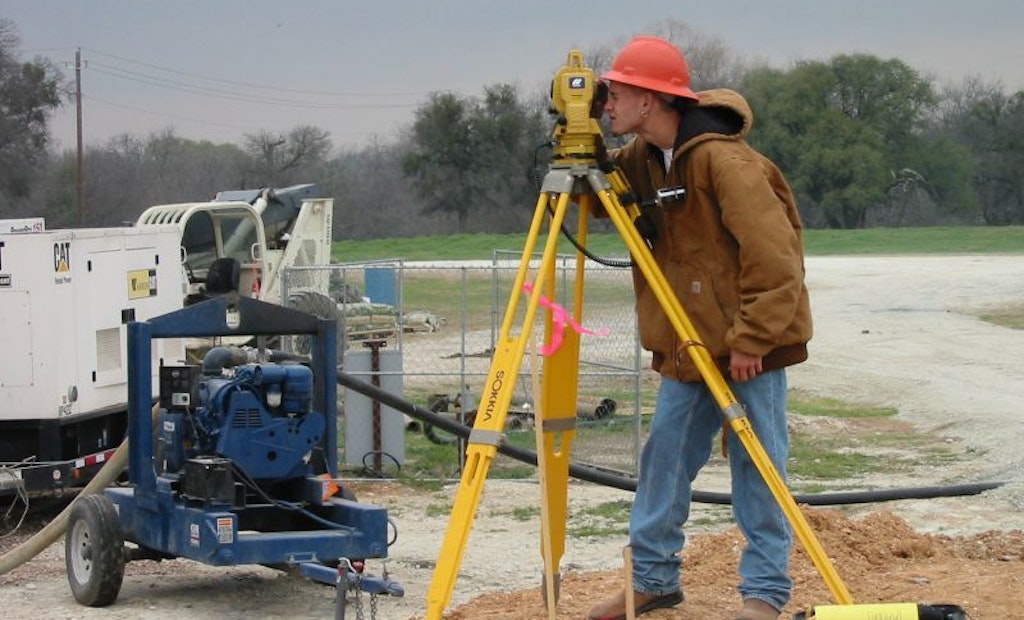
A Sempco Surveying employee surveys a well pad site in Texas using Trimble equipment. (Contributed photo from Sempco Surveying)
A number of different types of equipment are available with a range of cost and strength to determine elevation differences and establish contour elevations. It is up to the individual installer or site evaluator to decide the appropriate tools for the job at hand.
Hand Level
A hand level is a small device that looks something like a telescope. The operator looks through the eyepiece and lines the crosshairs on an object. A bubble can be seen through the eyepiece so the operator can level the instrument. The best way to use a hand level is to have a second person hold the surveyors rod or to have the rod in a holder that is inserted into the ground at the point of interest. The person looking through the hand level reads off the measurements at the points. The different readings indicate the elevation differences between the points.
Abney Level
An Abney level is similar to a hand level but also has the ability to measure slope by an arc measure related to percentage of slope. It is more expensive than the simpler hand level but allows taking quick measures of slope.
Transit or Level
Both are tripod instruments that can be used to determine relative elevations of various parts of the wastewater treatment system. A transit is used by land surveyors and has more functions than the level, including measuring distances and determining slope.
Rotating Laser Level
Development of this piece of equipment has made life easier for the installer and site evaluator; it can be somewhat expensive but saves a lot of time. The laser level is also a tripod instrument. A rotating laser sends out a beam that can be read directly on a surveyor’s rod or on a receiver attached to the rod. It can be used easily by a single person.
Surveying Rod
For all of the above, one necessary piece of equipment is the surveyor’s rod. The rod should be in good condition with the numbers easily readable. Something to be aware of is the rod, just like measuring tapes, can be in fractions of inches and feet or in tenths of feet. Know which one you are using.
One note of caution for any of these pieces of equipment is that they need to be handled carefully and maintained in good condition. Throwing them in the back of a pickup or leaving transits and levels in the cab of the truck where they are subject to extreme temperature changes can affect their accuracy. Imagine setting the depth of excavation for the tank with an inaccurate instrument. The survey rod should have clearly readable numbers; they can wear off if the rod is not properly cared for, making reading difficult. A way to tell a good contractor is by looking at this equipment.
About the author: Jim Anderson is connected with the University of Minnesota onsite wastewater treatment program and is an emeritus professor in the university’s Department of Soil, Water and Climate. Send him questions about septic system maintenance and operation by sending an email to kim.peterson@colepublishing.com.
This article is part of a series on site surveying.
- Site Surveying: Terms You Should Know
- Equipment Options for Site Surveying
- Using a Hand or Abney Level
- Surveying: Checking Relative Elevations
- Establishing Onsite Treatment System Elevations Using a Benchmark





